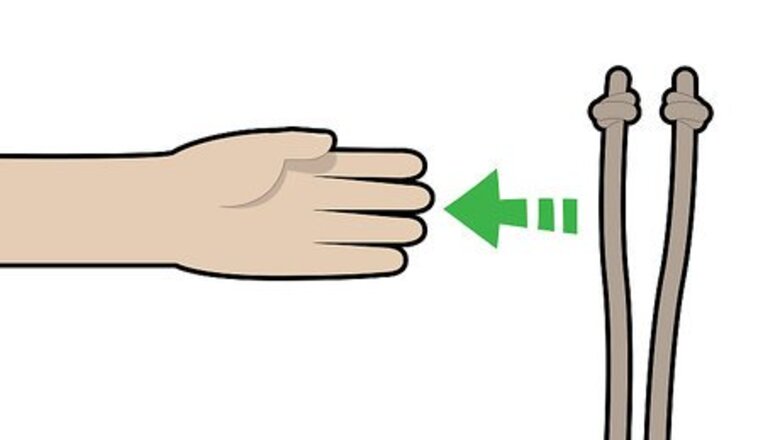
views
Tying Rope in a Figure 8
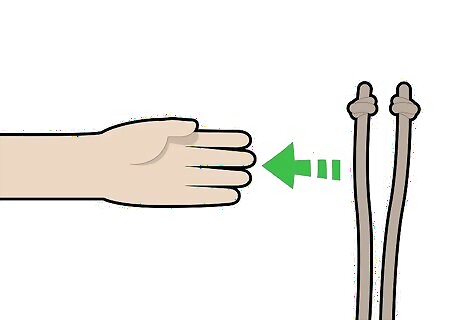
Grab both ends of the rope with your non-dominant hand. If the ends of your rope aren't knotted, knot each end individually to keep the ends of the rope from fraying. Then, hold the knots at the same height so that the rest of the rope hangs down to the ground.
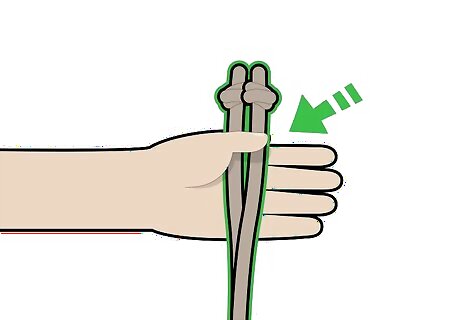
Place the knots between your thumb and index finger on your non-dominant hand. Put both of the knots side by side and push them between your thumb and index finger, letting them rest under your palm. Keep your hand flat rather than curled in a fist.
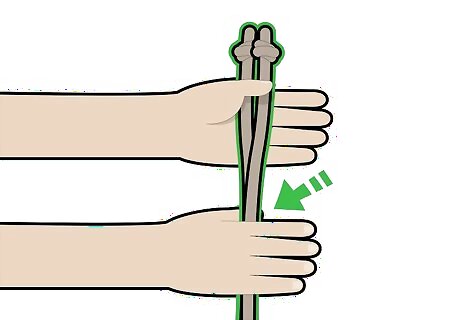
Grab the hanging rope between your thumb and index finger of your dominant hand. Hold your hands around 0.3 m (0.98 ft) apart so you have the knots in one hand and the 2 lines of rope in your other hand. Avoid curling your hands into fists; they should be flat with the rope pinched between your thumb and index finger. The rest of the rope will hang free on the opposite side of your dominant hand.
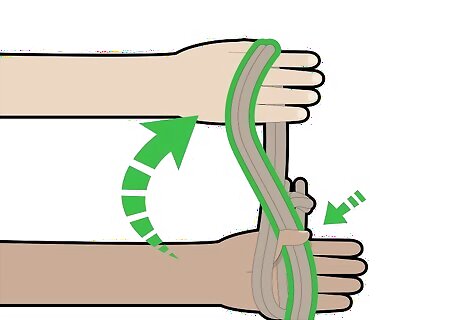
Lift your dominant hand above your non-dominant hand and catch the dangling rope in your non-dominant hand. Slowly bring your dominant hand up so you don't lose control of the rope or let it get too loose. When your dominant hand is directly above your non-dominant hand, grab the excess rope between your thumb and index finger on your non-dominant hand so they’re next to the knots.

Bring your non-dominant hand above your dominant hand and catch the rope in your dominant hand. Simply mirror the move you made in the previous step. Be careful and slow as you move your non-dominant hand so you keep maximum control of the rope. When your non-dominant hand is above your dominant hand, grab the excess rope with your dominant hand between your thumb and index finger so it’s next to the rope already in your hand.

Continue alternating hands until 0.5 m (1.6 ft) of rope is left. All you have to do is keep switching between hands, bringing 1 hand above the other and catching the excess rope between your thumb and index finger. This technique will create a figure 8.
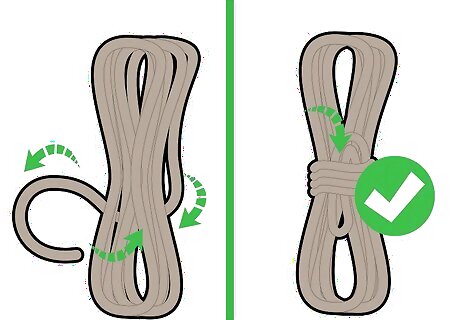
Grab the center of the tied rope and wrap the excess around it. Tightly wrap the remaining rope around the center of the figure 8. When you’ve got about 30 cm (12 in) left, wrap the rope over your thumb so it’s in the middle of the bundle. Fold the tail end of the rope into a loop and tuck it under the wrapped rope where your thumb is. Pull the loop to tighten the binding knot. When you're ready to use the rope, simply tug on the loop that you tucked under the wrapped rope. The entire hank will easily uncoil without tangling so you can access the rope quickly.
Coiling the Rope

Wrap the rope repeatedly around your hand. This process is known as coiling and will result in a neat, compact bundle. Grab one end of the rope between your thumb and your palm and use your other hand to wrap the free end of the rope around your palm repeatedly. Try to wrap the rope tightly but not so tight that it cuts off the blood flow to your hand. For very thick ropes or ropes longer than 3 metres (9.8 ft), hold your arm so your bicep is parallel to the ground and your forearm is perpendicular to the ground. Wrap the rope over your hand and around your bicep/elbow to make a larger loop.

Stop coiling the rope when there's 30 cm (12 in) left. You don't need to stop exactly at this measurement but try to get as close as you can to it. This excess rope is important in tying the rope together for storage. Place the free end of the rope over the top of your palm to prepare for tying it. If the rope is particularly thick or long, you may need more than 30 cm (12 in) of excess in order to wrap the rope around the coils.
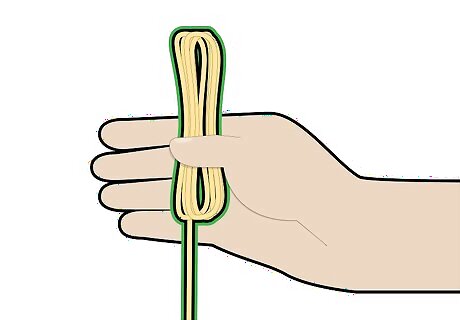
Take the wrapped line off your hand and hold it together. Be careful so the rope doesn’t unravel. Slowly pull the loops off of your hand, holding the excess line in place in the middle of the wrapped loops.

Wrap the excess line around the middle of the bunch. Squeeze the loops together tightly in one hand so it makes a single bundle. Loop the excess line around the center of the bundle with your other hand. Wrap the line until there's around 5 centimetres (2.0 in) left.

Make a loop with the extra line and thread it through 1 side of the bundle. Using the last bit of excess rope, create a loop and push it through 1 of the loops on either side of the bundle from the back to the front.

Pull the loop down around the bunch. Bring the loop you created around the top of the loop you pushed it through to the back of the bunch. Slide the loop down along the bunch and pull on the tail end of the rope to make the coil tidy and compact. To uncoil the rope, reverse the last step to bring the loop from the back to the front. Then, tug on the tail end of the rope so that the coils come undone.
Putting the Rope Away
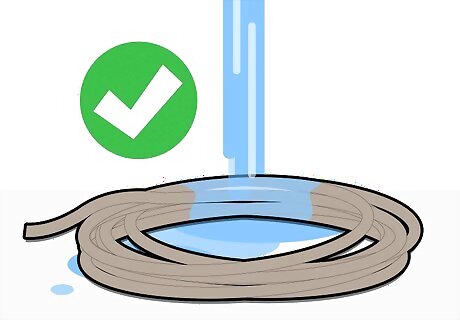
Rinse the rope before you tie it if it’s dirty, then let it dry. Depending on how and where you use the rope, materials like dirt and salt can work their way into the fibers and damage the material of the rope over time. Use freshwater to rinse the rope, and avoid using harsh cleaners, which could damage the fibers. Be sure to let it dry completely before coiling it up! Air-dry the rope in a spot out of direct sunlight, as heat and light can weaken the rope.

Keep your rope away from chemicals. Chemicals can damage your rope and lead to breakage when under tension. If you notice that a chemical has spilled on your rope, throw your rope out.
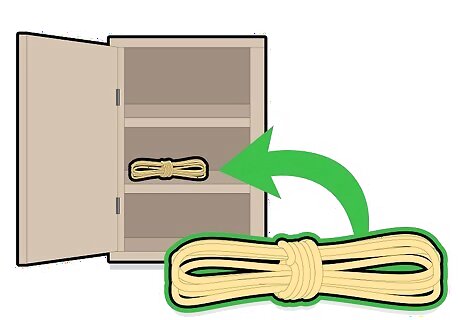
Store the rope in a cool, dry, dark place. Ultraviolet radiation can damage the rope's fibers over time. Don't leave your rope in your garden, in a puddle of water or on another wet surface, or out in direct sunlight for long periods of time. Put your rope in a dark area where sunlight won't break it down over time, such as in a closet, garage, or shed. If the place where you store your rope is damp, the fibers will shrink and the rope will stretch more than it should, which could snap it.
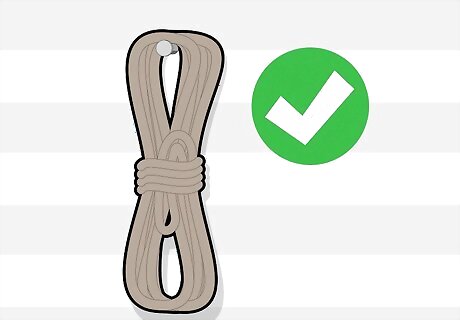
Hang the rope up or lay it flat until you need to use it. Hang the neat bundle of rope on a nail or hook in your garage or shed. Or, lay the rope on a shelf or table, if that works better for you. Before using the rope again, visually inspect it for fraying. You can also tug on the rope to determine if it has any weak points. If you find any issues, purchase a new rope to prevent injuries should the damaged rope snap.



















Comments
0 comment